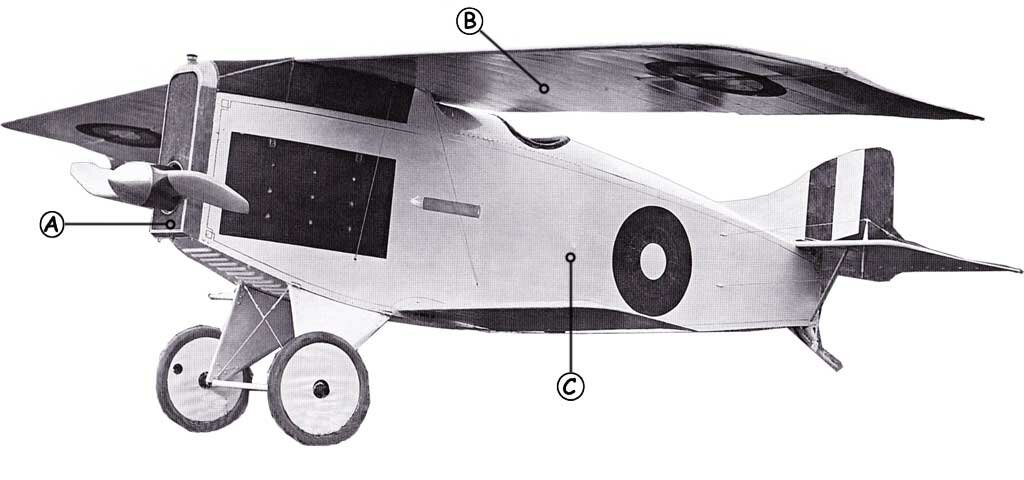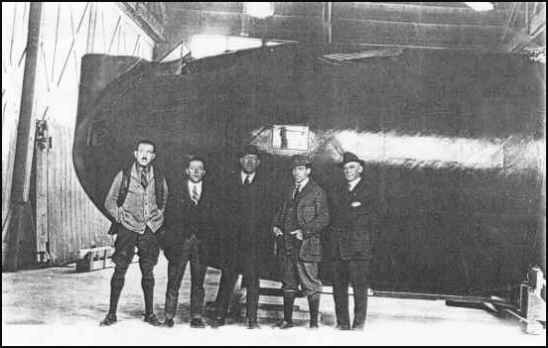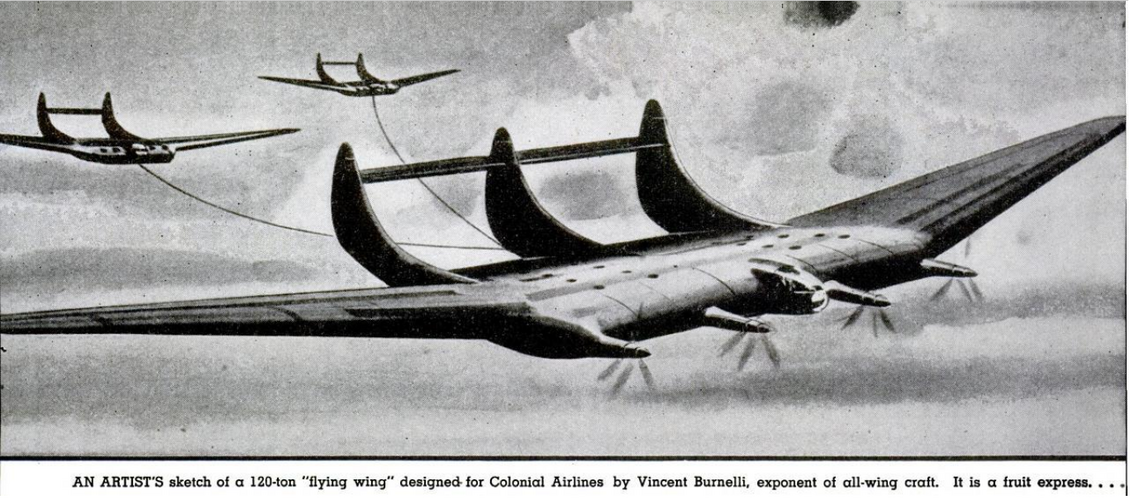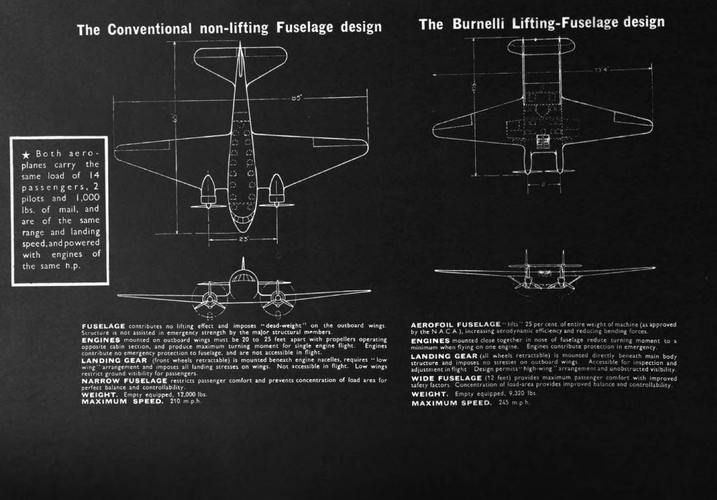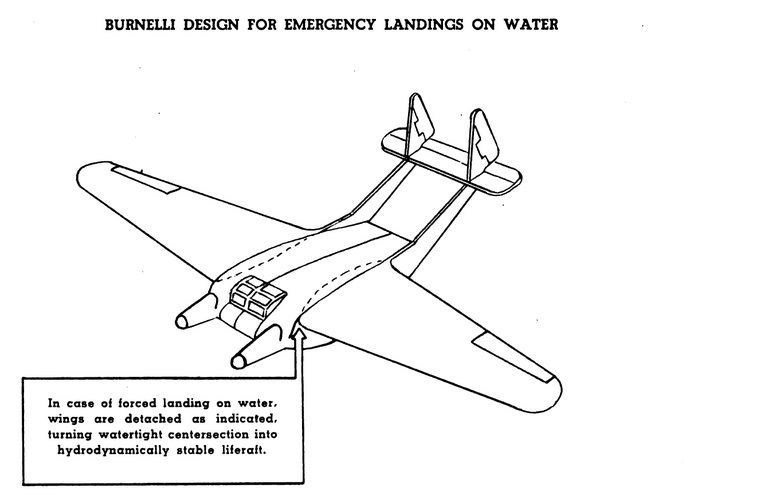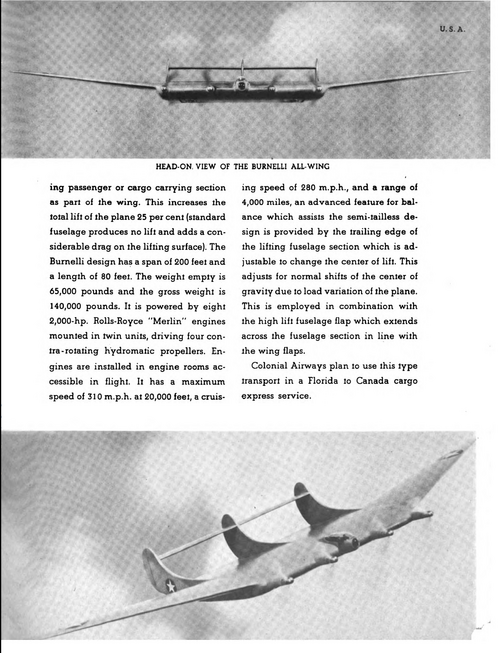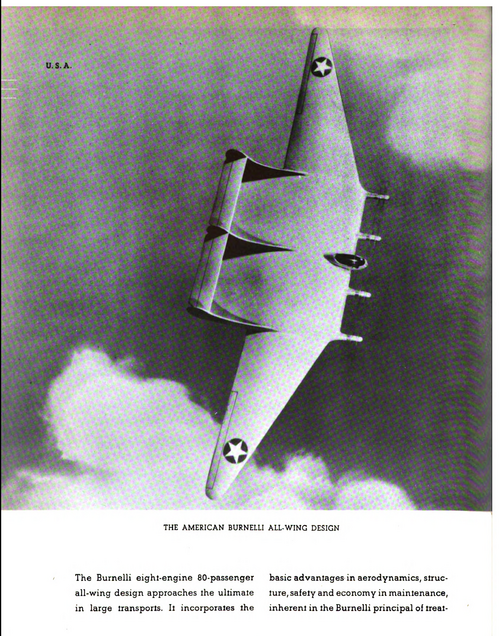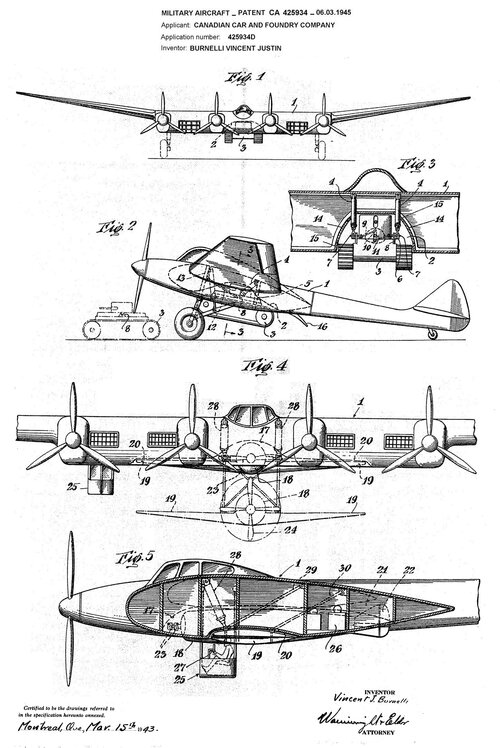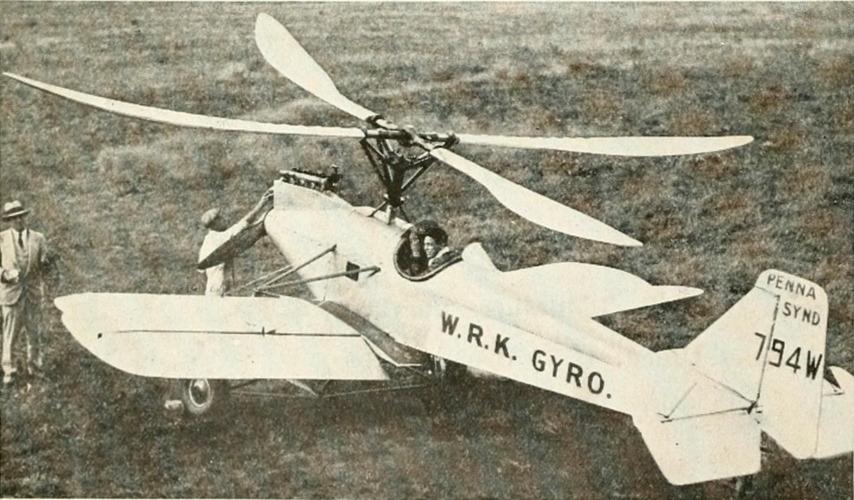Here is some Burnelli designs with Canadian CCF,also there were the CBY-3
and also the CBY-4 with "Loadmaster 4" Projects.
Story of the CB-34
A colourful magazine cover on a 1939 edition of Model Airplane News excitedly depicted a futuristic looking bomber speeding over a sinking ship, an artist’s rendition of what he perceived a new anticipated Burnelli aircraft would look like, and which was identified as the CB-34 bomber. As it turned out, the artist’s description and rendering of the aircraft was close, but a little off the mark, since it’s Canadian manufacturer had other plans for the design.
The CC&F had for years specialized in railroad car manufacture, but sometime in the mid 30’s, management had astutely decided that there was good business to be had by expanding into the aircraft manufacturing business, as the promise of air transport’s advantages over rail service became more apparent especially across Canada’s vast borders. One candidate that caught their attention was one of Burnellis radical “lifting body” aircraft, the UB-14. Burnelli had had some success with his UB-14, displaying it in Belgium, the Netherlands and the UK where aircraft manufacturer Cunliffe-Owens had even built one under licence with the intent to build more. The original was later sold to Nicaraguan airline, TACA, and when Burnelli’s company subsequently went bankrupt, CC&F came to his rescue, and in the process, acquired his patents and rights to build the UB-14. It seems the purchase was a godsend for Burnelli, and soon he was working closely with CC&F designing new aircraft that incorporated his lifting body design.
At their Fort Williams plant, management announced plans to soon begin production of the UB-14 while back in Montreal, ambitious efforts were underway to develop an even larger, more ambitious version, twice as wide as the UB-14, called the CB-34 which would be built in Fort Williams as well. The mock-up included the full fuselage and right wing built of wood at the company’s Cartierville factory, but photos and correspondence reveal that the CB-34 was intended to be a commercial transport if built by its Canadian financiers, rather than a bomber (although other plans for a future bomber were also investigated). It is likely the “B” in the classification stood for “Burnelli” rather than “bomber” and it’s builders more intent on capturing the burgeoning air transport opportunity across Canada than competing against larger American manufacturers already engaged in bomber construction.
Unfortunately for CC&F and Burnelli, the Department of Transport was both skeptical about the viability of a transport plane to be made in Canada and resistant to accepting a radical new design despite already having been proven and accepted by the UK civil aviation authorities. In fact, when CC&F’s general manager and vice president, L.A. Peto, wrote to the Minister of Transport to ask for his assistance in approving technical drawings as they were finished, the controller of Civil Aviation (who reported to the Minister) noted “Let sleeping dogs lie” on a copy of the letter shared internally as though to suggest administration staff should provide as little assistance as possible . Another civil aviation inspector (who’d visited the factory to inspect a full-scale mock-up), noted that while the company’s claims of performance seemed legitimate and not exaggerated, the “problem of placing it in commercial operation was something else again”. Below the comment, the Civil Aviation Controller initialed his name with the comment “I agree” effectively signalling that the Department of Transport had no intention of supporting CC&F’s ambitious endeavour.
What followed, was a series of roadblocks and endless requests for additional information from the Department of Transport, essentially delaying any progress on the construction of a flying aircraft. Ultimately, Canada’s entry into the war would bring a number of contracts to CC&F to build American-designed aircraft such as the Hawker Hurricane, and further development of the CB-34 was shelved as these new priorities occupied most of the company’s resources. Nonetheless. as the war later drew to a close, a scaled down, twin-engine version of the CB-34, called the CBY-3 would finally result in a finished aircraft which the determined CC&F staff believed to be a sound overall design and that offered numerous advantages over conventional aircraft.
These photos of the CB-34 mock-up taken by the Department of Transport inspector may be the only existing images of the CB-34, tucked away in the National Archives for over 80 years and only revealed recently after declassification and a Freedom of Information request.
**If you have a comment or additional info to share on the history of this aircraft, please send it to ed.das@rogers.com
canadianaerospace.weebly.com





